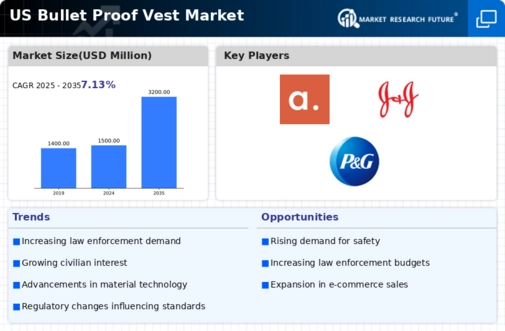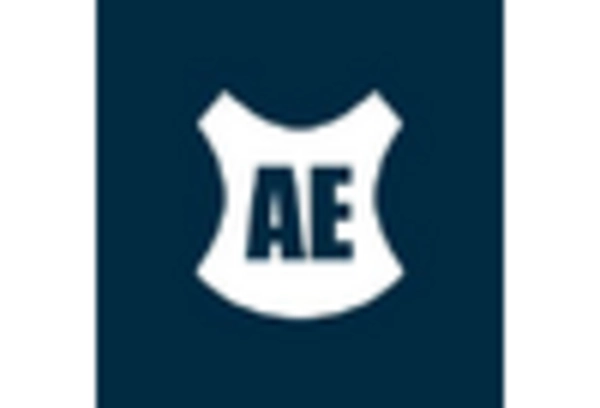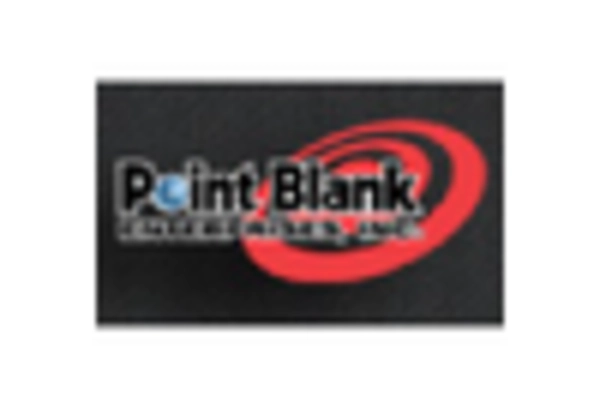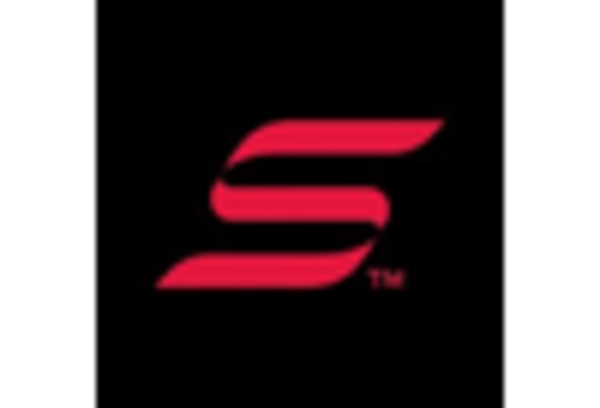The bullet proof-vest market is characterized by a competitive landscape that is increasingly shaped by innovation, strategic partnerships, and a focus on advanced materials. Key players such as Safariland (US), Point Blank Enterprises (US), and Armor Express (US) are at the forefront, each adopting distinct strategies to enhance their market positioning. Safariland (US) emphasizes technological advancements in ballistic protection, while Point Blank Enterprises (US) focuses on expanding its product range through strategic acquisitions. Armor Express (US) is leveraging partnerships with law enforcement agencies to tailor its offerings, thereby enhancing customer loyalty and market penetration. Collectively, these strategies contribute to a dynamic competitive environment, where innovation and customer-centric approaches are paramount.
In terms of business tactics, companies are increasingly localizing manufacturing to reduce lead times and enhance supply chain resilience. This trend is particularly evident in the bullet proof-vest market, which is moderately fragmented, with several players vying for market share. The collective influence of these key players is significant, as they not only drive technological advancements but also set industry standards that smaller competitors must follow.
In October 2025, Safariland (US) announced a partnership with a leading technology firm to develop smart vests equipped with integrated communication systems. This strategic move is likely to position Safariland (US) as a pioneer in the integration of technology within personal protective equipment, potentially attracting a broader customer base that values innovation and functionality. The partnership underscores the growing importance of technology in enhancing the effectiveness of bullet proof vests.
In September 2025, Point Blank Enterprises (US) completed the acquisition of a smaller competitor specializing in lightweight ballistic materials. This acquisition is strategically significant as it allows Point Blank Enterprises (US) to enhance its product offerings and improve its competitive edge in the lightweight segment of the market. The integration of advanced materials is expected to meet the evolving demands of law enforcement and military customers, who prioritize mobility without compromising protection.
In August 2025, Armor Express (US) launched a new line of vests designed specifically for tactical operations, incorporating feedback from military personnel. This initiative reflects Armor Express's (US) commitment to customer collaboration and innovation. By aligning product development with the needs of end-users, the company is likely to strengthen its market position and foster long-term relationships with key stakeholders.
As of November 2025, the bullet proof-vest market is witnessing trends that emphasize digitalization, sustainability, and the integration of artificial intelligence. Strategic alliances are increasingly shaping the competitive landscape, enabling companies to pool resources and expertise. Looking ahead, it appears that competitive differentiation will evolve, shifting from price-based competition to a focus on innovation, technology, and supply chain reliability. This transition suggests that companies that prioritize research and development, alongside sustainable practices, will likely emerge as leaders in the market.

















Leave a Comment